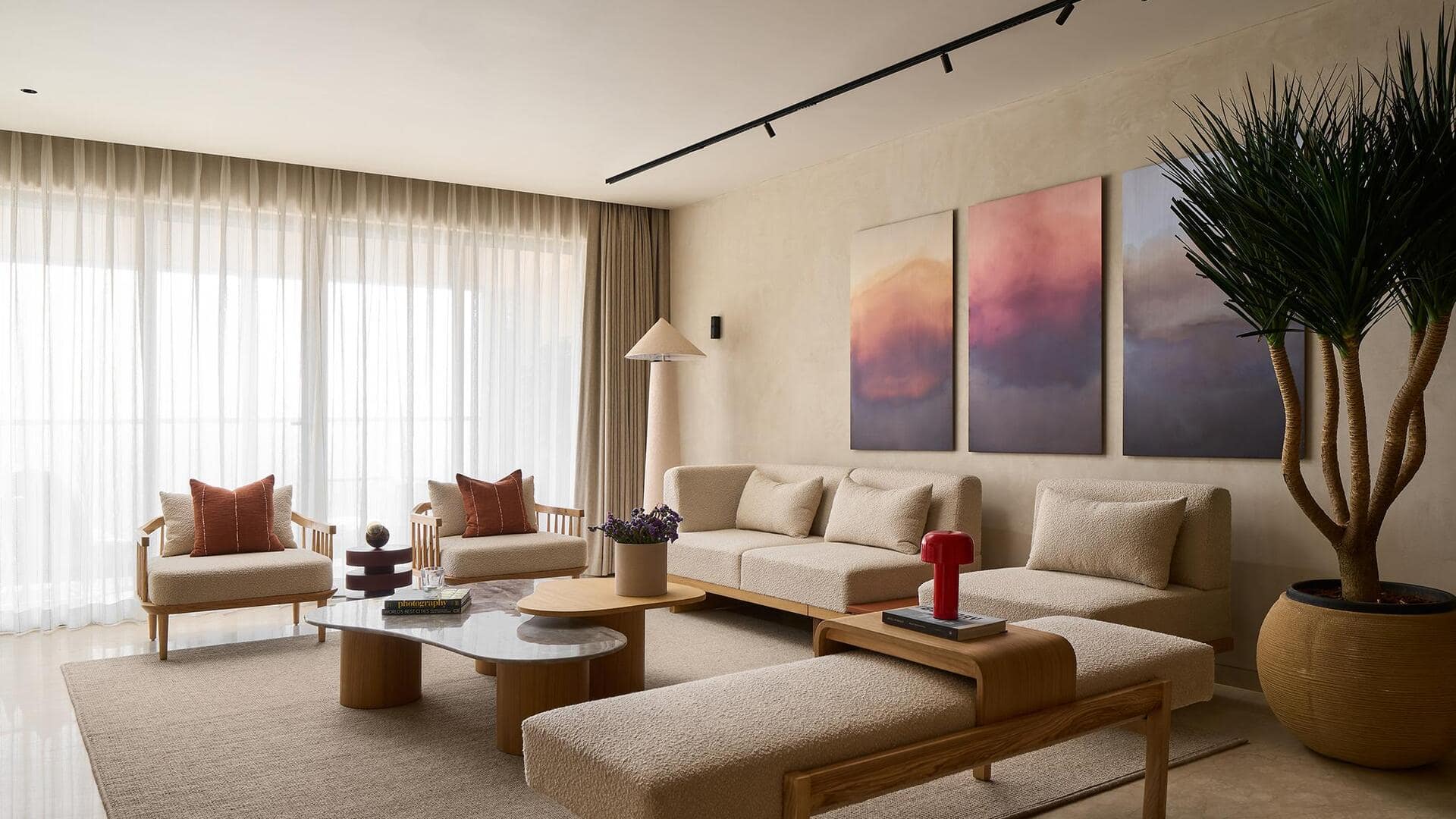
Japandi style: A blend of Japanese and Scandinavian decor
What's the story
A beautiful fusion of Japanese and Scandinavian design principles, Japandi style is all about harmony. The decor style takes the best of both cultures' minimalist aesthetics and creates serene, yet functional spaces. Featuring clean lines, neutral colors, and natural materials, Japandi gives the modern interior design a unique, beautiful twist for those who want their living spaces to be tranquil.
Simplicity
Minimalist design principles
Japandi style lives and breathes minimalism. It's all about decluttering spaces and using only essential furniture and decor items. The idea is to create an environment where every piece has a purpose without bombarding the senses. This not only beautifies the place but also clears the mind.
Authenticity
Natural materials usage
Natural materials such as wood, bamboo, and stone are at the heart of Japandi decor. They add warmth and texture to the space while keeping it connected to the nature. These elements also play a role in forming a calming atmosphere that complements both Japanese Zen philosophy and Scandinavian hygge.
Serenity
Neutral color palette
The color palette in Japandi style is majorly neutral, with shades like beige, white, gray, and soft pastels. These colors not only make a serene environment but also reflect light softly across the space. The subtlety of these hues allows you to go ahead and add personal touches with accessories or artwork without breaking a harmony.
Practicality
Functional furniture choices
Furniture in Japandi interiors is all about functionality and simplicity. Pieces are usually low-profile with clean lines crafted from natural materials like wood or rattan. This way, you get practicality without compromising on aesthetics—each item serves multiple purposes, making usability in space-crunched urban dwellings much easier.
Nature connection
Incorporating greenery indoors
Bringing plants indoors is another key aspect of Japandi design, which strengthens the connection between indoor environments and the nature outside them. Indoor plants not only purify air but also add life into minimalist settings, making them feel more inviting. Simple planters made from clay or ceramic complement this decor perfectly.